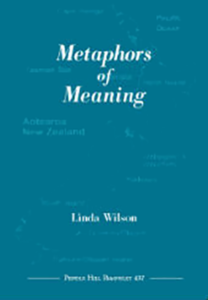Metaphors of Meaning
Reviewed by Bob Dixon-Kolar
August 1, 2016
 By Linda Wilson. Pendle Hill Pamphlets #437, 2016. 32 pages. $7/pamphlet.
By Linda Wilson. Pendle Hill Pamphlets #437, 2016. 32 pages. $7/pamphlet.
Buy from Quakerbooks
The spiritual life is a journey. That metaphorical statement speaks of the adventures and challenges one faces on the long road toward divine realization. Linda Wilson, author of the Pendle Hill pamphlet Metaphors of Meaning, acknowledges that for many Friends the metaphor of a journey suits them just fine. It works for me. But it does not work for Wilson. To her, the image of a spiritual journey implies that one wishes to leave behind all that’s familiar in search of something extraordinary. And, as Wilson humorously notes, to set off on a journey usually means having to lug around “baggage.”
Wilson presents Friends with a compelling alternative to the journey metaphor: to tend one’s spiritual home. If a journey is about going, home-tending, she says, is about being and doing. And more times than not, what one does is ordinary and unassuming, yet no less vital and valuable.
A spiritual home is an interior “place” that gives us security, renews our energy, and lets us become our true selves once again. From within this safe haven we regain the strength we need for connectedness. Wilson describes that connectedness as three-fold: it’s personal when it integrates our experiences by dint of an Inward Light; it’s external when it draws us close to the people we “know, love and work with”; and it’s natural, or this-worldly, when it connects us to the earth as a “living environment” whose preservation depends on our attention and care.
Wilson views her home-tending metaphor as feminist and relational. Because hierarchical and gendered terms for the Divine did not align with her spiritual experience, she needed to set them aside. Not only were figurative words like “King,” “Lord,” and “Father” unsatisfactory, but so were certain feminine substitutes, such as “goddess” and “mother god,” for they too denote a supreme being. Any attentive reader—feminist or traditionalist, man or woman—can learn much from Wilson’s method for testing potential metaphors against one’s deepest spiritual intuitions.
A fascinating element of Wilson’s pamphlet is her formal introduction of herself to readers. She calls herself “a New Zealander of Scottish descent,” but following the custom of the Maori, the indigenous people of New Zealand, she introduces herself first “by land and water,” and only then traces her family lineage—from her grandparents, to her parents, to her present life with her husband and foster daughter. Situating herself in this way, in terms of geography and ancestry, is a significant act. As she says, “It locates you in relation to others and enables people to place you and know your connections.”
The metaphor of tending one’s spiritual home works well for Wilson, and she convincingly shows how very practical a personally meaningful metaphor can be. Indeed, she details 12 ways we can bring “tending” into our everyday lives! Now let me be clear: Wilson is not trying to win converts. Rather, she examines her metaphor to illustrate how readers can discover, live by, and share their own spiritually orienting metaphors.



Comments on Friendsjournal.org may be used in the Forum of the print magazine and may be edited for length and clarity.